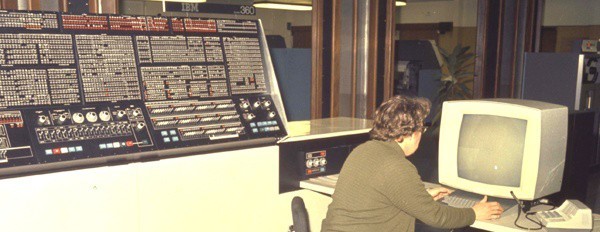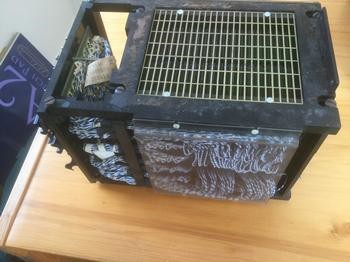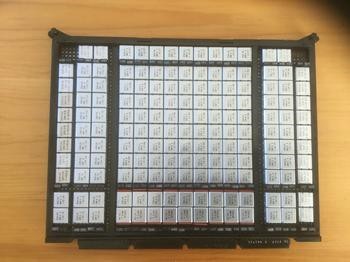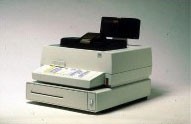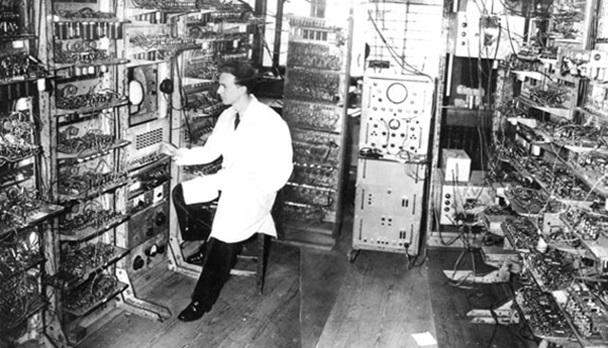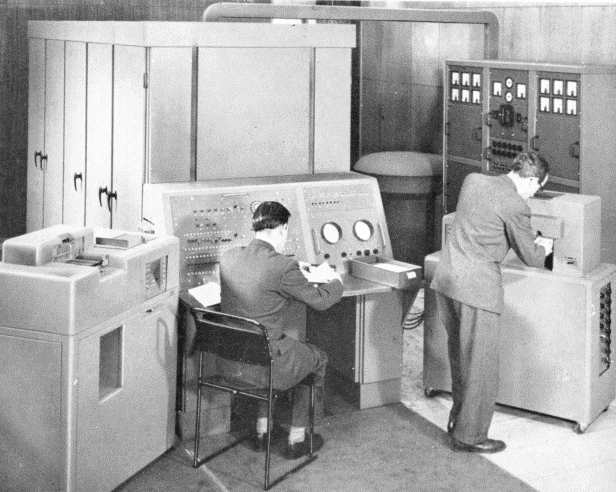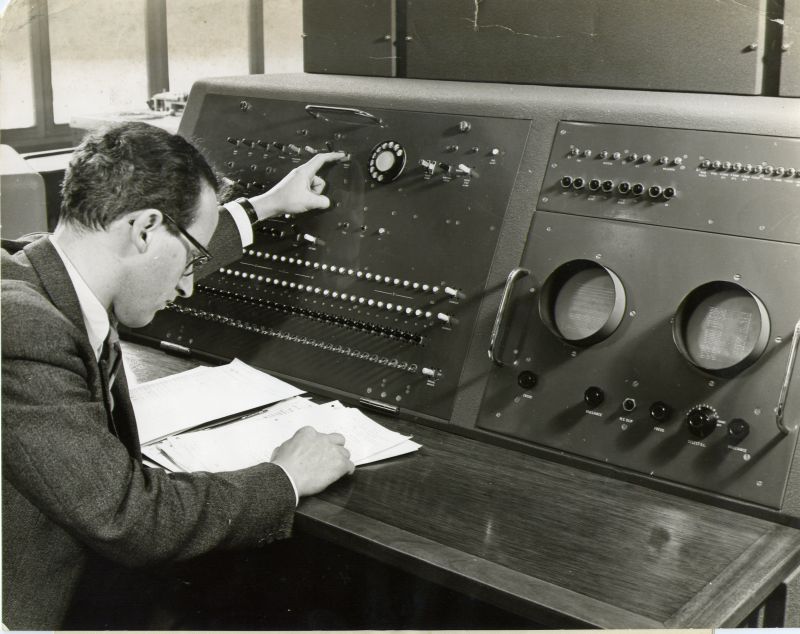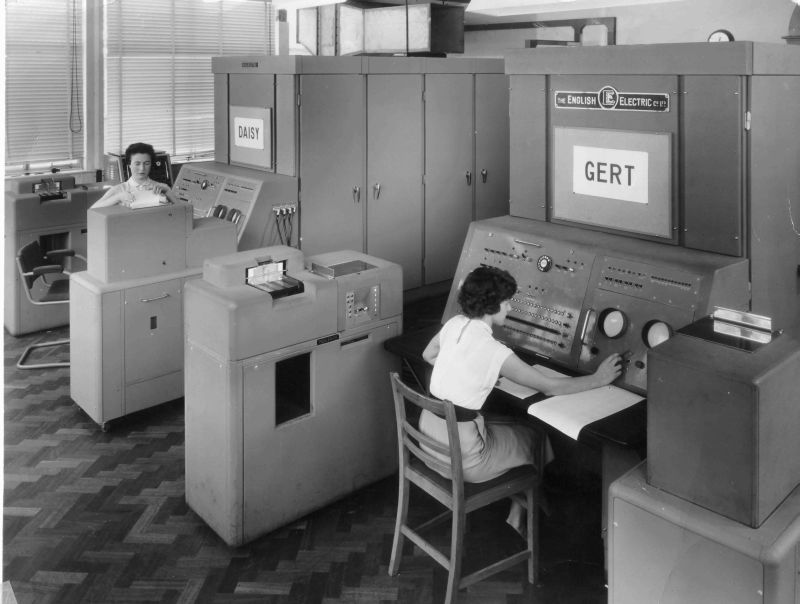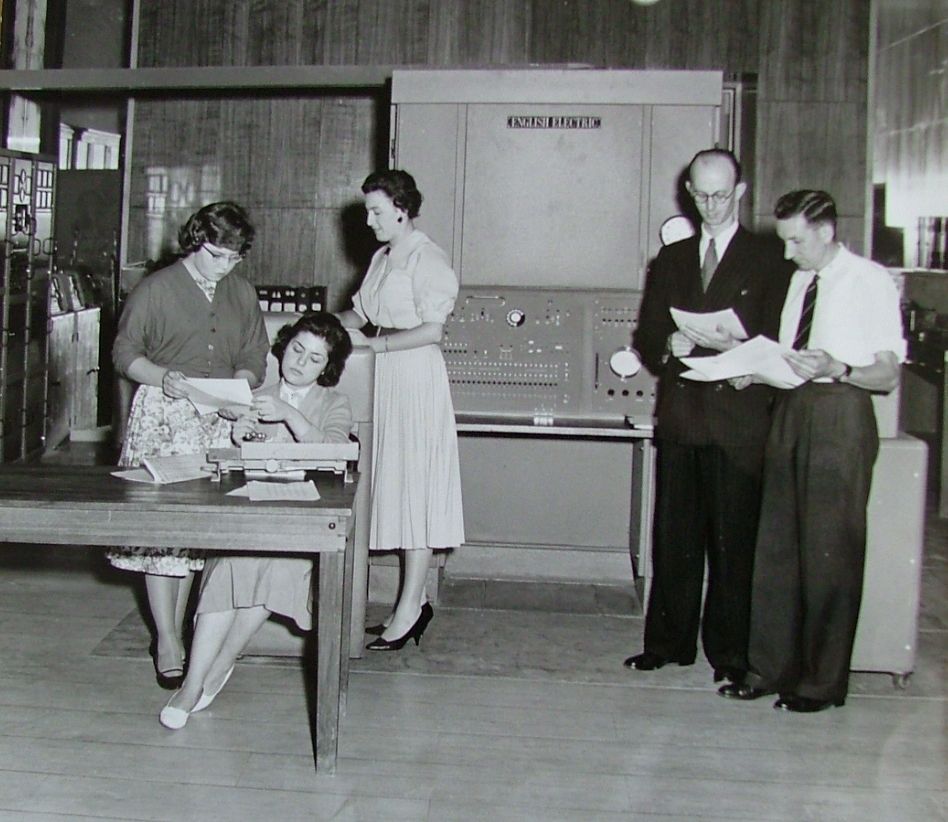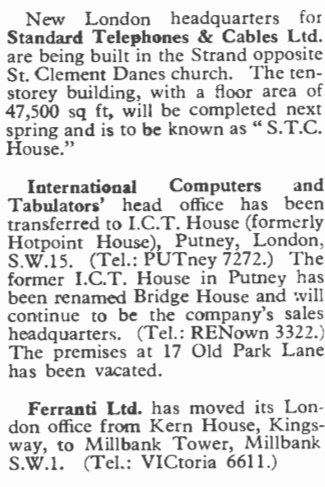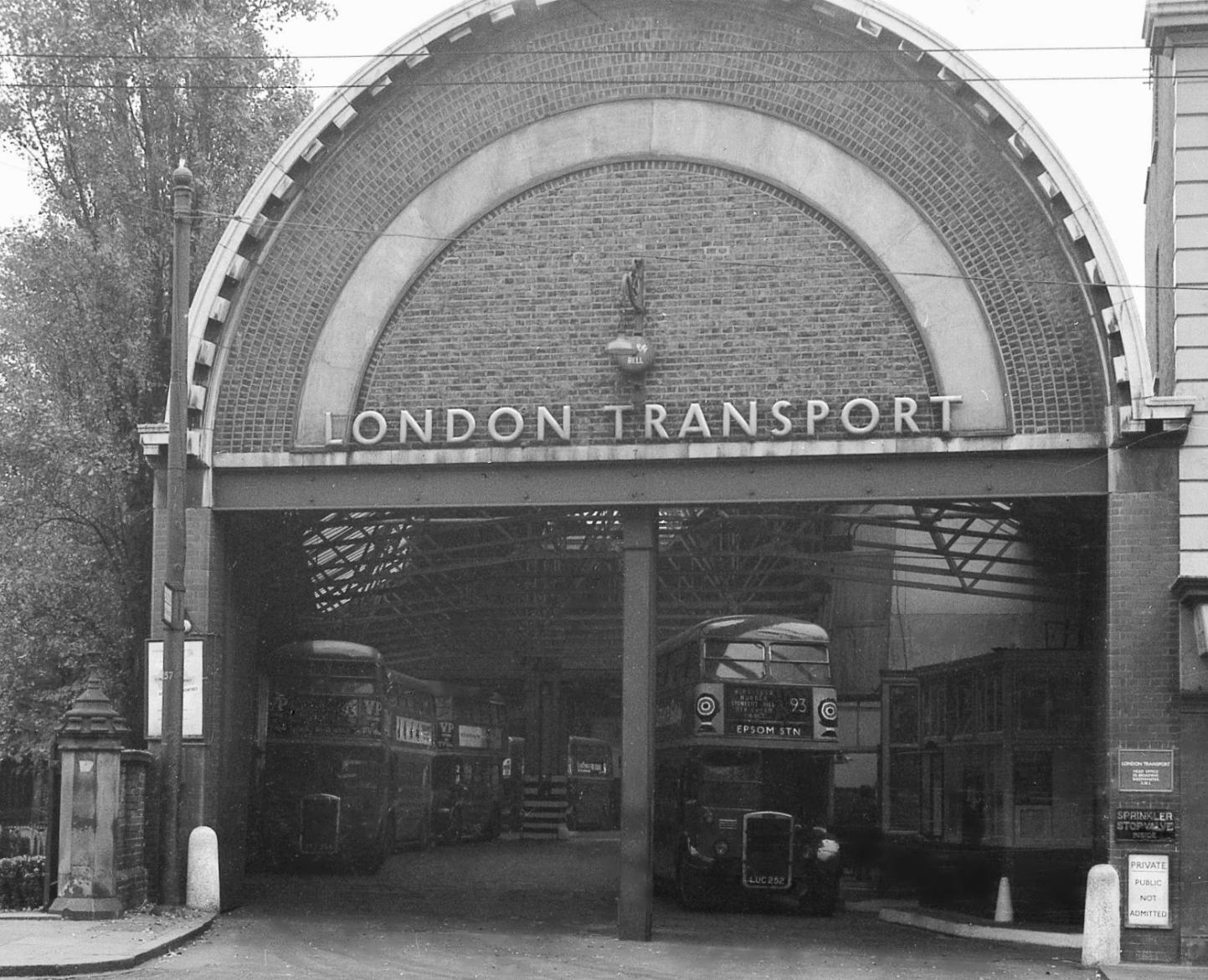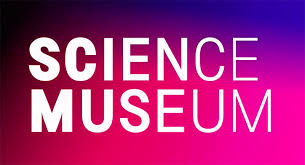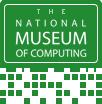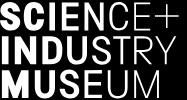| Resurrection Home | Previous issue | Next issue | View Original Cover | PDF Version |
Computer
RESURRECTION
The Journal of the Computer Conservation Society
ISSN 0958-7403
|
Number 92 |
Winter 2020/21 |
Contents
| Society Activity | |
| News Round-up | |
| CCS Annual Report | David Morriss |
| Obituary: Prof. Dai Edwards | Simon Lavington |
| Compiler Compiler – A Gentle Introduction | Dik Leatherdale |
| Very Early programming at English Electric | Simon Lavington |
| The TNMoC 2966 – A Tale of its Predecessors | Brian Spoor |
| ICL House Revisited | Dik Leatherdale |
| 50 Years Ago .... From the Pages of Computer Weekly | Brian Aldous |
| Forthcoming Events | |
| Committee of the Society | |
| Aims and Objectives |
Society Activity
|
ICL2966 — Delwyn Holroyd No problems to report since September. Due to the non-availability of project team members, the machine has only been operated for the public on the Saturdays when I have been at the museum. |
|
IBM Museum — Peter Short There has been little in the way of activities since the last report. We have received more donations, mainly on paper, but including some items from S360/195 machines two of which were installed at Rutherford Appleton Laboratory in Harwell, Oxfordshire. The 195 was the fastest System 360 model and used a 32k high speed buffer to, in effect, reduce the main storage cycle time from 756 nanoseconds to 54 resulting in faster overall processing times. With an integrated floating-point processor and ability to process up to seven operations simultaneously, the 195s were used for highly intense particle physics research. Because of their specialised purpose, the CPUs were in service long after their ‘sell-by’ dates and were eventually dismantled for scrap in 1982. The artefacts include a core store module, several high speed buffer cards and logic diagram books. The story of Rutherford Labs Computing & Automation Division up to 1984 is documented at www.chilton-computing.org.uk/ca/home.htm. The website home page includes this picture of a 360/195 console.
Once the unidentified CE tool reported last time was received we were able to identify its purpose. One of the cassette tapes was labelled as a 3683 IML Backup. So it was used to load software into the 3683. The IBM 3683 was a cash till, announced late 1980 for shipment 3Q 1981, together with the IBM 3687 UPC code scanner and a separate print station. At the time of announcement, a checkout station with one 3683 and 3687 scanner together with three print stations was priced at $10,033. It could also be leased under a five year agreement for $320 per month. |
|
Harwell Dekatron/WITCH — Delwyn Holroyd A couple of faults have occurred since the last report : a valve failure in the pulse generator and a dirty relay contact. The valve failure (cathode grid short) is notable for its rarity – very few replacements have been needed since the machine was rebooted eight years ago. The resulting lack of B pulses caused a festive light display of randomly lit trigger tubes at power on and a completely inoperable arithmetic unit. The dirty relay contact resulted in none of the transfer units triggering when Store 66 was selected as the sending store. We were able to deduce the exact location of this fault because there is only one thing that all the digits in a store row have in common and could conceivably cause this symptom – the relay contact controlling the bias voltage applied to the Dekatron cathodes in the selected store row. If only all problems were that easy to diagnose! |
|
EDSAC — Andrew Herbert EDSAC commissioning continues, despite Covid-19. Our volunteers have found ways to work with reasonable personal distancing at the museum and remotely connecting via Zoom to others offsite. A video about this will shortly be posted on the EDSAC web site (www.edsac.org) as part of the ongoing series recording the progress of the project. The current focus is on testing orders that fetch operands from memory to be processed by the arithmetic unit. Simple loads via the H (load multiplicand) order have been demonstrated. The logic has needed some adjustment to handle cases where the operand address is close to the address of the issuing order and some consequent rework is needed in the coincidence system. The Main Control Unit state machine seems to be working correctly, the main issues arising are correct decoding of orders into signals to activate individual arithmetic unit functions and correctly delivering End Pulse signals back from the arithmetic unit to main control. Once read type orders are verified attention will turn to those that write operands back from the accumulator to store. There was recent filming of EDSAC for a TV programme in the “Inside the Factory” series in which Ruth Goodman interviewed me about the role EDSAC played in the development of LEO I. |
|
Elliott 803 903 & 920M — Terry Froggatt Peter Onion reports that, after the long Summer lockdown, it took a few weeks of work on the 803 core stores to get them stable again. He took the opportunity to check some of the core X-Y drive signal timings and replaced a couple of aged timing capacitors to get them back nearer to original specification. He also found a transistor that wasn’t working when it was cold and he replaced that as well. Likewise after the first lockdown, Peter Williamson had to swap a few cards on the 903 with working spare cards to get the 903 working again quickly. One of my own 903s, which are kept warmer and drier than those at TNMoC, is also beginning to show its age. The cable sleeving inside the store connectors has perished and one of the address wires had corroded through, which I’ve repaired. (Fitting new 37-way & 50-way connectors would be tedious: 456 wires in all). The 903 engineers’ display unit, which we only brought fully into use in early 2020 by fitting a new plug, supposedly suffered a total failure shortly thereafter. Peter Williamson has bench-tested it at home and it appears to be OK, so it should be reconnected to the 903 when the second lockdown ends. Regarding the 920Ms, I have built a neater power supply for the eBay 920M, and Andrew Herbert has connected the RAA/TNMoC 920M to the power supply provided by Erik Baigar, and is currently designing his Raspberry Pi interface for it. |
|
Our Computer Heritage — Simon Lavington Amongst computers not yet covered by the OCH website are the following English Electric machines: (a) the KDN2, KDF6 and KDF7 group of computers; (b) the KDP10 and KDN8 computers. A start on documenting the KDF6 was made by Andrew Herbert’s excellent article in Resurrection 89. With the pandemic making further archival research difficult, we are asking CCS members to get in touch if they have to hand any relevant English Electric documents in electronic form or could help by sending anecdotes of sites using the KDN2, KDF6 and KDF7 or KDP10 and KDN8 computers. If you can help with these English Electric computers, please get in touch with Simon: lavis@essex.ac.uk. |
|
ICT/ICL 1900 — Delwyn Holroyd ICL1904S Emulator Further work was found to be needed on the fixed disc (Bryant 2/2A/2B - 2804/2805/2806) emulation. David, our colleague in Canada, has been investigating EWG3 (GEORGE 3 New Interface Executive) and problems with multiple transports on a controller. Was EWG3 ever used with these devices, or did it come after they were obsolete? We are now happy that the FDS emulation is correct, E6RM is happy, and that any problems are due to faults in EWG3. We are interested in how many of these devices were actually delivered and whether any site had more than one installed. Any information would be welcomed. New work has now started on emulating an Inter-Processor Buffer (7210), enabling two processors to be linked to allow data transfers between programs running on different processors and for shared disc clusters linked to both processors. Progress has been steady using original ICL Executive Mode test programs that we managed to recover from disc images whilst assisting the computer museum in Katowice last year. |
|
Software — David Holdsworth Compiler Compiler
Towards the end of October, Graham Toal circulated a message saying that Edinburgh University
has located a lot of thesis papers he thought had been lost in the library fire and has
scanned them and put them online at: era.ed.ac.uk/handle/1842/17809.
This includes David Rees’s thesis about IMP and other things at
era.ed.ac.uk/handle/1842/17809.
IMP is a derivative of Atlas Autocode KDF9 – Kidsgrove Algol I have been working to smooth out the differences between use of Bill Findlay’s “ee9” emulator and my own emulator called simply “kdf9”. The result of this effort can be seen at: settle.ddns.net/KDF9/kalgol/DavidHo/demo20.htm. A new version of Bill Findlay’s emulator can be found at: www.findlayw.plus.com/KDF9/emulation/emulator.html Algol Basic Symbols – KDF9 and elsewhere In earlier efforts at preservation with George 3 or the BBC Micro, character codes were not really an issue, thanks to the global acceptance of the ISO standards on the matter. With Leo III and KDF9 we have machines that pre-date the standardisation of character codes. The Leo III character set is so small that it is easily mapped onto a subset of today’s common keyboard characters. Algol Basic Symbols form quite a rich set with one or two arcane squiggles among them, not to mention multi-character symbols. We are now converging on a single program for reading Algol Basic Symbols which accepts a wide range of common usages, and emerges from this discussion. It does have to have an option for the interpretation of asterisk, as either * (asterisk) or × (multiply). Atlas I Two lineprinter paper boxes full of Atlas I program listings, manuals and notes have been kindly lent to Dik Leatherdale by Bill Williams. Dik has been transcribing the source code for the system utility collection “SERVICE” implementing the various facilities one at a time, together with the enclosing framework. Much progress has been made but some unexplained code has been found, so this task has been put to one side for the time being. Instead Dik has transcribed the London version of the CPL Elementary Programming Manual and the Atlas Commercial Language (ACL) manual which, in due course will find their way onto the web together with a transcription of the Fortran V manual which was completed a few months ago. |
News Round-Up
|
In the last edition of Resurrection we reported that the Science Museum was working with several other IT museums on a project which we now learn is entitled “Circuits of practice: Narrating modern computing in museum environments”. Some details of the aims and aspirations of the project have been published and can be found at gtr.ukri.org/projects?ref=AH%2FT00276X%2F1#/tabOverview . We wish them every success. 101010101 In 1965 Alan Turing’s mother Sarah donated a number of his personal items to Sherborne School in remembrance of his time there. The items included a letter from King George VI on the occasion of the award of Turing’s OBE and his PhD certificate from Princeton In 1984 the collection was “removed” by one Julie Schwinghammer, an American person who subsequently changed her name to Julie Turing. 30 years on she seems to have offered to lend the items to the University of Colorado whilst claiming to be a relative. At which point the items were recovered and are being returned to Sherborne School by Homeland Security Investigations. “Ms Turing”, rather bizarrely, claims to have “gifted” them. Ms Turing has appeared in court but no prosecution will now take place. More details of this very strange tale may be found at www.bbc.co.uk/news/uk-england-dorset-54784018. |
The Tony Sale Award
The Computer Conservation Society has now taken the decision to leave this for an additional year to ensure that any projects which might be eligible will have sufficient time to catch up, hopefully when the virus allows work to continue, as well as providing time to seek a new sponsor for the Award. It is therefore hoped to publish the invitation in January 2022 with the aim of making an Award in November 2022. Peta Walmisley Administrator to the Tony Sale Award |
CCS Annual ReportDavid MorrissAt this time last year I was writing what I thought would be my final report as Chairman. As it turned out I remained in post for another year and who could have predicted what a bizarre year it would turn out to be? As always the Society has been well served by its officers, committee members and project teams, especially with the challenges the pandemic has brought. We owe them all our grateful thanks. My thanks also to you our members whose support both by attending events and donating to our funds makes it all worthwhile. It is perhaps the ability of an organisation to face challenges that is the best indication of its strength. Events up to the lockdown were well supported. Membership is staying strong and the Resurrection publication has continued to appear on a regular basis. Events of course are another story. The committee was able to rapidly adapt to online working with the additional benefit of remote participation by our northern based colleagues. Setting up our first on-line lecture required a great deal of work, especially from Roger Johnson and Bill Barksfield. In the event we had a record attendance including global participation. This will now continue to be our format until physical meetings are permitted. It is not lost on the committee that the technology gives us the means to further extend our reach and participation including possibly some form of hybrid model in the future. I hope to continue to serve the organisation going forward and wish Doron Swade every success as he takes over the office of Chairman. |
As Retirement BeckonsAs BCS members go into retirement from their professional lives some, perhaps understandably, choose to resign from BCS The Chartered Institute for IT. They may not, perhaps, realise that in so doing, they are also leaving the Computer Conservation Society. The CCS is always sorry to lose its valued members and we would encourage you to consider a “retired-rate” BCS membership and/or “life membership”. But if neither of these appeal you can re-join the CCS with no membership fee by going to www.computerconservationsociety.org/membership_general.htm . As a former BCS member, assuming you have been a member for at least five years and are over 60, you can also arrange to receive a paper copy of Resurrection without charge by contacting the editor. |
Obituary: Prof. Dai Edwards
Simon LavingtonCompiler Compiler: A Gentle Introduction
Dik Leatherdale
The Compiler Compiler emerged in the very early 1960s as a language aimed at the production of compilers for other languages within the Atlas computer which was being constructed at the time. Devised by Tony Brooker and Derrick Morris of the University of Manchester, the implementation was largely the work of Derrick, Jeff Rohl and Iain MacCallum. The Compiler Compiler (hereinafter CC) allows the programmer to define the grammar of a target language in a meta-language. Program in the target language can be matched against this grammar. Once a statement has been recognised a corresponding subroutine written in a more conventional procedural programming language is invoked. It is this subroutine which is able to examine the analysed structure of the target statement and generate the corresponding machine instructions which will be executed later. This apparently simple principle is all very well but, until recently the language itself remained, more or less, a mystery to me. The Atlas emulator and the chance survival of the source of CC itself, have offered me the opportunity to explore the system and its abilities. I have implemented a trivial program written in the CC language which, although it is not actually a compiler, does something slightly useful while illustrating the spirit of the language. Our target language here is an adding machine – that is a “sum” involving integer addition and subtraction (no multiplication or division so no need for brackets) to be carried out “on-the-fly” by CC. Here is the complete program with some test data – PHRASE [PLUSORMINUS] = + , - PHRASE [RESTOFSUM] = [PLUSORMINUS][N][RESTOFSUM],NIL PHRASE [SUM] = [N][RESTOFSUM] FORMAT [SS] = [SUM]=[EOL] FORMAT [SS] = STOP FORMAT [SS] = [EOL] ROUTINE [SS] = STOP 1117, 0, 0, 0 END ROUTINE [SS] = [EOL] END , | DO NOTHING. THIS IS A BLANK LINE ROUTINE [SS] = [SUM]=[EOL] LET [SUM] = [N][RESTOFSUM] B11 = [N] 3) -> 1 UNLESS [RESTOFSUM] = [PLUSORMINUS][N][RESTOFSUM] -> 2 IF [PLUSORMINUS] = + B11 = B11 - [N] ,| THE OPERATOR IS - ->; 3 2) B11 = B11 + [N] ,| THE OPERATOR IS + ->; 3 1) | REACHED THE END OF THE EXPRESSION PRINT B11 NEWLINE END END OF MESSAGE 1 + 2 = 1+ 6-4= 1+ 6 -4-4 = 122= 1+ 8+4+4= STOP PHRASE is a syntactic object (its name enclosed in []s) composed of one or more underlying literals or subordinate PHRASEs. Alternative definitions may be specified with “,” (comma) taking the meaning OR. You will also note the presence of [N]. [N] is a “built-in” PHRASE which has been pre-defined in the CC software. It describes an unsigned integer. Another built-in PHRASE (not used here) is [COMMA] which needs to be pre-defined because of its significance in the CC language. Our final example is [EOL] which means “End Of Line”. NIL, by the way, means “none of the forgoing” and obviously is only ever used as a last in a set of alternative definitions. It is worth pointing out that the definition of [RESTOFSUM] is recursive. There are other ways of achieving this definition, but I have chosen this because it is simple and I like recursion. A FORMAT [SS] statement is similar to a PHRASE but has no name and is not used as a component of further definitions. It defines the very thing we are seeking. Once the system has matched a statement in the target language to a FORMAT it invokes a corresponding subroutine. Let’s start with the two easy ones – ROUTINE [SS] = STOP 1117, 0, 0, 0 END ROUTINE [SS] = [EOL] END , | DO NOTHING. THIS IS A BLANK LINE This requires very little explanation. Here the comma is a statement separator and the vertical bar introduces a comment. The 1117, 0, 0, 0 statement is the Atlas machine-level instruction for Stop. Although there is a rich set of operators, the imperative language is quite limited – there are no floating-point operations, no recursion and expressions are limited to only two operands – only what is most obviously useful to a compiler writer. Now we can turn to the “meat” of the program: the subroutine corresponding to an expression – ROUTINE [SS] = [SUM]=[EOL] LET [SUM] = [N][RESTOFSUM] B11 = [N] 3) -> 1 UNLESS [RESTOFSUM] = [PLUSORMINUS][N][RESTOFSUM] -> 2 IF [PLUSORMINUS] = + B11 = B11 - [N] ,| THE OPERATOR IS - -> 3 2) B11 = B11 + [N] ,| THE OPERATOR IS + -> 3 1) | REACHED THE END OF THE EXPRESSION PRINT B11 NEWLINE END As we enter the subroutine, we have access to a weird sort of variable [SUM]. So the first thing we do is to expand it using the statement LET [SUM] = [N][RESTOFSUM]. This gives us access to two further phrase variables [N] and [RESTOFSUM]. We have already described [N] as a representation of an integer, but [N] has another useful property in that it can be used in arithmetic expressions. When we say B11 = [N] we are assigning whatever number we have identified from the source statement to the variable B11. But B11 also requires some explanation, for it is one of some 128 24-bit index registers (B-Lines) in the Atlas machine. So now we have the first term of the expression we want to analyse. Next, we need to determine whether there are any more terms. You will recall that [RESTOFSUM] has two alternative definitions. To determine which one is active we essay -> 1 UNLESS [RESTOFSUM] = [PLUSORMINUS][N][RESTOFSUM] (-> means go to). If there are no further terms, we exit from the loop we’ve just entered, print the result and return to analyse the next statement in the input stream. Otherwise this brings new PHRASE variables into play. The previous values of [N] and [RESTOFSUM] are overwritten but [PLUSORMINUS] is new. The next line examines the value of [PLUSORMINUS] and acts accordingly before looping back to examine the next term (if any) in the expression. So that’s about it. We have, in essence, not two but three languages here: the meta language; a second language for interpreting the meta language findings (LET, IF, UNLESS and many others); and a conventional programming language with which the second is intermixed. We have only skimmed the surface of the system, but hopefully enough to give some appreciation of how it all works. Most of all, let us try to imagine the size of a conventional program to do what our 25-line program achieves. But what other systems existed to aid the compiler writer’s task? Interested readers should refer to the comprehensive survey at www.chilton-computing.org.uk/acl/applications/cc/p007.htm (Hopgood, Witty, Coulouris). In particular Alec Glennie’s “Syntax Machine” at www.chilton-computing.org.uk/acl/literature/reports/p024.htm is of much interest as a near-contemporary of CC.
Bob Hopgood is known to have ported CC to the Bendix G21 Thanks are due to Iain MacCallum and Bob Hopgood for their unfailing assistance and patience. |
Very Early Programming at English ElectricSimon LavingtonBy early 1955 four British manufacturers had delivered production computers. The companies and their products were:
In addition, the Lyons catering company had built its own computer, LEO, which was applied to in-house applications. Upgraded versions were produced for sale on the open market from 1958.
By 1955 the first tentative uses of general-purpose digital computers were mostly in science and engineering. The Cold War threatened. Government defence contracts formed an underlying theme to many end-users’ applications. To prepare for this, computer manufacturers set up their own programming teams. Each team’s general brief encompassed three activities:
By studying early programming teams, one can get a sense of how the job title “programmer” (rather than titles such as computing clerk or computer or operator) first emerged into the world outside wartime establishments and the research labs of academia. We take the English Electric DEUCE team as an example. Section 1 reviews the early chronology of DEUCE in an attempt to fix the point when, and where, a specific programming team emerged. Regrettably, few English Electric company records have survived so details have had to be deduced indirectly from other source documents and from personal anecdotes. Some useful background references are given here. In Sections 2 and 3 DEUCE’s entry into the marketplace is described. For completeness, Section 4 gives a brief introduction to English Electric’s London Computing Centre, which commenced operations right at the end of the 1950s. Finally, Section 5 summarises English Electric’s early programming activity. 1. The chronology: from NPL to NRL DEUCE was the fully-engineered production version of the Pilot ACE computer based on Alan Turing’s design. Pilot ACE first ran a program on 10th May 1950 at the National Physical Laboratory (NPL). From late 1948 or early 1949 onwards, the English Electric Company (EE) had seconded a small number of staff to NPL to help with the computer’s construction. Amongst the seconded EE staff was the engineer R. T. Clayden and the mathematician George T. Davis and four wiremen, all reporting to A. C. D. (Colin) Haley. Sir George Nelson, English Electric’s Chairman, was a member of NPL’s Executive Committee. English Electric was a large, well-established company of 30,000 employees. They manufactured a wide range of products – everything from aeroplanes to locomotives, from control and instrumentation equipment to domestic appliances. In the 1950s EE had factories, laboratories and offices in several UK locations. The site chosen to develop DEUCE was the company’s Nelson Research Laboratories (NRL) in Blackheath Lane, Stafford. DEUCE work was well under way by 1952 at NRL. Later, DEUCE production was moved to a new EE factory at Kidsgrove 25 miles north of Stafford, but NRL retained central control of DEUCE hardware and software technology. P. J. (Jeremy) Walker, an engineer who joined English Electric in 1955 said in a 1995 retrospective talk that: “Colin Haley described the ACE pilot as a ‘dog’s breakfast’ and from 1949 through to 1951/1952 they [NRL] set about engineering what was very much a ‘laboratory model’ into a more robust entity, to be known as DEUCE”. It was at the Nelson Research Laboratories that the first DEUCE programming group emerged. Curiously, a self-styled first edition of the DEUCE programming manual that has come to light was not issued until 5th January 1955. Perhaps before this date, NRL programmers used interim documents or maybe annotated Pilot ACE manuals produced by NPL? Early PILOT ACE library programs and other software utilities were written at NPL by mathematicians who included: Jim Wilkinson and Mike Woodger (both from 1946) and Betty Curtis, Gerry Alway and Donald Davies (who all joined in 1947). Much of the NPL software, and in particular the popular General Interpretive Program (GIP) and the Alphacode system which was a simple three-address autocode, were transferred directly to DEUCE. There were only a few very minor differences in the instruction sets of ACE and DEUCE.
To continue with the NRL story, there is an unattributed anecdote to the effect that: “George Davis helped with software and hardware development of Pilot ACE ... Davis also got permission from Colin Haley to go home for six weeks and write Pilot ACE Logic Design & Programming manuals ... As the design of DEUCE accelerated, Davis appointed himself a sort of Chief Technical Clerk, issuing successive drafts of the instruction code aimed at keeping the structure coherent contributing various snippets of logic design, etc.” None of these early drafts, nor their dates, have yet come to light. By about 1953 or 1954 the programming group at the Nelson Research Laboratory numbered approximately six people. In charge was Cliff Robinson, with Allan Gilmour his number two. Other team members in no particular order were Vic Price, Roger Smith (who edited DEUCE News and controlled the subroutine library), John Denison and George Davis. By 1957 the group had expanded to include Neville Hawkins, Peter Holland, Jim Lucking, David Ozanne, John Boothroyd and Mike Wetherfield. More programmers joined NRL later. Besides retaining two early production DEUCE computers (see section 3 below) together with their maintenance engineers and a number of development engineers, the Nelson Research Laboratories housed all the people who served the growing number of DEUCE computers deployed elsewhere. This included “managers and secretarial staff, programmers, data preparation staff and also the ancillary Hollerith equipment for printing and copying the punched cards which were DEUCE’s primary input/output medium. NRL was at the heart of English Electric’s involvement with DEUCEs in the field”. In about 1960, many of the programmers and engineers at NRL were relocated to English Electric’s Kidsgrove site. Meanwhile, DEUCE programming groups had developed at other English Electric laboratories. For example, a DEUCE was delivered to English Electric’s research centre at Whetstone, south-east of Leicester, in February 1958. Garry Tee remembers that: “From 1958 to 1964 I was a mathematics and computing consultant to English Electric Company in the Mechanical Engineering Laboratory [MEL] of their very large research centre at Whetstone”. Another English Electric site to take delivery of a DEUCE was the company’s Guided Weapons Division at Luton, where a DEUCE arrived in the summer of 1958. An analogue computer, LACE (Luton Analogue Computing Engine), had been developed at Luton between 1953 and 1956. The person in charge of the project is believed to have been the redoubtable engineer Dr Winifred Hackett. After graduating in September 1956, Harold Fineberg worked for a time in the Computing Department at Luton, under Winifred Hackett. Fineberg remembers that: “I learned how to use the mechanical calculators (Friden and Marchant come to mind) and it was while there that I heard about DEUCE. They even had a manual that described how to programme it and I knew that I had found my place. This would be sometime about 1957. The Luton DEUCE was delivered in 1958 and commissioned by Frank Thompson. I looked after the machine from 1958 until Luton closed in 1962”. Fineberg’s memories touch on the transition period from analogue and electro-mechanical computing to high-speed digital electronic computing. This transition was common in all aerospace companies in the 1950s. 2. DEUCE is readied for market Back in 1952, English Electric had considered DEUCE primarily as a new and powerful tool to be used by the company’s many research and development centres, along with a limited number of kindred outside establishments such as NPL and the Royal Aircraft Establishment (RAE) at Farnborough. It was only later that wider market opportunities came to prominence. Jeremy Walker remembers: “It was realised that DEUCE was no longer a laboratory curiosity and that it should be sold commercially by EE. To this end, continued development and readying for production was transferred in 1954 to the fairly recently formed Industrial Electronics Department (IED) at Kidsgrove. Despite the re-engineering of the product that had taken place at NRL, it was hardly reliable and so a good deal of work was to be done on making it reliable and enhancing it as necessary, with all further development and output taking place from Kidsgrove”. In 1954 the Kidsgrove facility was not fully up and running. Construction at the Kidsgrove site had started in 1952. Parts of the works began to come on line during 1954. Bays 1 and 2 of the factory were the first to be completed. “Several laboratories and offices were set up in each Bay dealing with development and design of electronic instrumentation equipment, peripherals for DEUCE and magnetic amplifiers (magamps)... Also, production of LACE was transferred to Kidsgrove in 1954. Work then commenced in 1954 on Bay 3, which was built to accommodate a test facility for DEUCE mainframes and special ventilation ducting was needed to deal with the several kW of heat that each generated”. The first edition of DEUCE News was dated July 1955. It is tempting to deduce that summer 1955 marks the start of a viable external DEUCE end-user community. This is borne out by the delivery data. 3. Delivery of DEUCE computers
Production of DEUCE machines took place in two distinct phases. Firstly, seven DEUCEs were built at the Nelson Research Laboratories at Stafford, with the first machine completed in about 1952. It is likely that only five of these seven NRL DEUCEs left the factory floor. Two of the post-1952 NRL machines were probably pre-production prototypes. Mike Wetherfield, who joined NRL in the second half of 1957, remembers that: “During the time I was at NRL, Colin Haley and Ray Ellison sat in the machine room with, and maintained, the two DEUCEs; one took one’s hardware problems to them.” The Computer Conservation Society’s records show that, of the seven DEUCEs built at NRL, the following five complete systems were delivered to favoured end-users:
and probably one each to EE Marconi House, Strand, London and to EE Main Works, Stafford – though the precise delivery dates for the last two have not come to light. More information on the Marconi House delivery and the associated Computing Service is given below in Section 4. The first DEUCE to have been built at English Electric’s Kidsgrove factory is possibly the one that was delivered to the Bristol Aeroplane Company at Filton, Bristol, in June 1956. 27 more machines followed, making a grand total of about 33 DEUCE computers to have been delivered from either NRL or Kidsgrove in the period from 1952 to 1960. There is some confusion about the precise number, since definitive company records have not survived and some machines were passed from an initial site to another site later on. Nevertheless, in terms of the UK’s scientific and engineering community’s contemporary demand for powerful computers, 33 computers represented a significant slice of the market. 4. The DEUCE Computing Service in London
The person chosen to run the Computing Service was George Davis. It is remembered that George Davis (GD): “was summoned to see the dreaded J.K. Brown [the Nelson Research Lab’s Director] at Stafford and told to set up and run a DEUCE Computing Service at English Electric HQ, Marconi House in the Strand, as much as anything so that EE Chairman Sir George Nelson could show it off to his important visitors. So lone wolf maverick GD had to become an organisation man! Staff were recruited, many becoming lifetime friends. Vic Price, Chris Woodall, Peter Landin, Ron Eitel, Jack Richardson and John Woolger initially, later Doug Flower, Audrey Birchmore, Anne Stower (now Woodall), Peter Docherty and others. The London DEUCE was a year late, and the team were kindly housed by the National Physical Laboratory [at Teddington] while Ron, Jack & GD maintained the NPL DEUCE”. The names of other programmers at Marconi House may have included Janet Skinner (neé Porteous) and Jean Dace (neé Thomas). It is deduced that the London Computing Service did not get really under way until about 1960. 5. Summary The impression is that, at least up until the end of 1954, computing activity at both of English Electric’s Nelson Research Laboratories and Kidsgrove establishments had an engineering focus. There may have been little need to create a specific software team. By the time a formalised team was established at NRL – perhaps some time in late 1954? – it numbered about six people. Specific names that have come to light are: Cliff Robinson, Allan Gilmour, Vic Price, Roger Smith, John Denison and George Davis. This group initially supported English Electric mathematicians who utilised DEUCE within other EE factories and laboratories. From mid-1956 DEUCE machines were being installed more widely, with a consequential expansion of the external user community. English Electric’s own programmer population expanded accordingly. For example, by about 1960 a dozen programmers were employed at the company’s Computing Service at Marconi House in the Strand. Also, by that time, a number of other English Electric computers such as the KDF9 were being designed and the company was well-established as a computer manufacturer. |
CCS Website InformationThe Society has its own website, which is located at www.computerconservationsociety.org. It contains news items, details of forthcoming events, and also electronic copies of all past issues of Resurrection, in both HTML and PDF formats, which can be downloaded for printing. At www.computerconservationsociety.org/software/software-index.htm, can be found emulators for historic machines together with associated software and related documents all of which may be downloaded. |
The TNMoC 2966 : A Tale of its PredecessorsBrian SpoorIn 1978 I was working for ICL DataSkil as a development programmer on the GEORGE 2+ systems team. GEORGE 2+, produced by ICL DataSkil, was a chargeable version of the standard ICL operating system GEORGE 2, providing a number of optional facilities. It consisted of several versions (or levels), the highest level being GEORGE 2+ DOF (Dynamic Output Files) which provided near GEORGE 3 facilities in terms of job description features and scheduling and was suitable for smaller machines than those required for GEORGE 3. I worked on developing the output (spooler) module for the new LPS14 laser printer for G2+DOF/1C (preliminary laser version) and new output spoolers for G2+DOF/2A (full laser version and other enhancements). (As Delwyn Holroyd has remarked, “the guilty party’s name is in the source”.) During this time, we were asked to produce a special streamlined version for Tarmac in Wolverhampton, to decrease operating system machine usage, thus increasing production throughput. This special version designated /1T was forked from /1B and used new techniques, to us, of Inter-Program Communication between the scheduler and other modules, also close linking the remote job entry program. Eventually this required a brand-new scheduler (clean sheet design), new input/output spoolers and a virtually rewritten RJE module. The central (processing) module probably required the least number of changes, although they were significant. My tasks were the basic structure and operation of the new scheduler and the new output modules, Mick Hassel wrote the command processor for the scheduler and the new input modules, while Andy ? and Mike Gee worked on the central module and acted as project co-ordinators. We also had, on loan from the GEORGE 2 team, somebody familiar with the G2 RJE module which standard G2+ also used, to produce the new integrated version. After some design discussions, actual programming, design amendments and program tweaking, we had the various modules basically tested in our development environment (GEORGE 3) but still required much system testing. System testing required us to have dedicated machine time. To give us that test time for the new operating system required the closure of the GEORGE 3 service that the whole of ICL DataSkil (Reading) used. This was both inconvenient to us (short slots, late evenings only) and other users of the machine, besides being expensive – we had budgets that needed to be observed. To get the time required to fully test and debug what was in effect a brand-new operating system, an arrangement was made with Tarmac for us to have full access to its redundant mainframe at the old computer centre, a 1903A at Tarmac Roadstone (Bilston), overlooked by the then just closed steelworks, until it was dismantled and the office space reused. The new computer centre at the new Tarmac Construction headquarters building (now demolished) had twin 2950 systems installed. We spent 3 months on site at Tarmac Roadstone debugging and polishing the new operating system. Meetings with the Tarmac IT Management, in those pre-PC days, were usually held in a local pub or working men’s club over a pint or two. In practice a lot was achieved in these informal meetings, including system design modifications on the back of a beer mat (later filed in the project folder). With the system now nearly running and the 1903A no longer available, we returned to Reading for a bit more tweaking and polishing, before returning to use one of the 2950 systems, dedicated to us from 17.00 to 24.00 for final testing. Tarmac’s own measurements showed the new system gave 2%-3% better work throughput than the standard system. We just had the system ready for release when the plug was pulled on the project and our work was archived. I have to assume that Tarmac continued to use the standard release G2+DOF/2A. The twin 2950 systems that we were using and which were destined to run G2+DOF/1T were later upgraded to the 2966 system that is now operational at TNMoC, apparently still running G2+ as the operating stations (“Opers”) are not the dual-head version required by G3. GEORGE 3 is now successfully running at the TMNoC on this 2966, using an Executive generated by my colleague Bill Gallagher to add the card reader and allow for a 21st century date. Although G3 is normally run using a dual-screen operating station, we have found that it will run using a single-screen station. Fortunately, various versions of GEORGE 2+ in either binary and/or source format still survive and it is an ambition of mine to get G2+DOF/1T running on the 2966 at TNMoC at some time in the future. There was a final release of G2+DOF/2B, which from looking at the binary had a more advanced printer properties feature added. |
ICL House RevisitedDik Leatherdale
In Resurrection 80 I mentioned in passing that ICT/ICL House in Putney was formerly Electrolux House. Well I was wrong. It was “Hotpoint House”. Before that it was the site of a bus garage. A little research (well, poking about on the Web, to be frank) found this notice in the December 1964 edition of Wireless World. Neatly sandwiched between similar announcements concerning the headquarters of STC and Ferranti, neither of which had, at that time, any connection with ICT. How percipient! From 1913 to 1959 the site was occupied, firstly by the buses of the National Steam Car Company, then by the London General Omnibus Company and latterly, by London Transport. The photo shows why the ICL car park had such high side walls. An observant soul might also have noticed a cast iron drain cover in the access road proclaiming ownership by the LGOC. All now gone alas.
But why “Revisited”? Well, on a nostalgic visit to Putney I discovered that the building, as well as containing a number of flats has, on the ground floor, a branch of Wetherspoons, all tastefully styled as a 19th century gentleman’s library. Somehow a public house seems appropriate. |
50 Years ago .... From the Pages of Computer WeeklyBrian AldousBBC to expand MIS system: The future development and operation of a Television Management Information System will be one of the major applications to be handled by a 64K ICL 1904A computer installed recently by the BBC at Sulgrave House near Television Centre, White City. The BBC’s TMIS is thought to be among the most advanced of its kind in the world. The BBC already has two other ICL 1900 machines, a 1909, which has now joined the 1904A at the newly constructed Sulgrave House computer centre and a 1901A at Cavendish Square. The 1904A has 64K store, 1,600 cpm card reader, paper tape reader, paper tape punch, two 1,350 lpm printers, eight 40Kch/s magnetic tape drives and four 8-million character exchangeable disc stores. An ICL EDS30 disc store with 150 million characters is to be added shortly. (CW 3/12/70 p.1) Databank to trace TV dodgers: Householders in the head post office areas of Croydon, Watford, Bromley and Paddington are being used by the Post Office as guinea-pigs in an experiment designed to improve the detection of television and radio licence evasion with the use of computerised records. A master file, containing the names and addresses of all householders in the areas covered by the experiment, is created, and matched with a file of known licence holders which is updated with information supplied, under legal obligation, by radio and television dealers. The computer is then used for two main tasks. It sends out automatic reminders to householders whose licence renewal comes due and it sends a letter to households which do not appear on its file of known licence-holders requesting them to co-operate in updating Post Office records by either buying a licence (if they have a radio or television), or justifying their lack of a licence. (CW 10/12/70 p.1) EDP systems to aid police work: Three experimental computer-based systems, now being developed by the Home Office and police authorities, could provide the British police with some of the most sophisticated support services in the world. The experiments are being carried out by Thames Valley Police at Slough, by Birmingham City force and by a joint Home Office-Ferranti team. The projects are in addition to the plan for a national police computer system for which a dual B6500 has been ordered. The Slough scheme involves the setting up of a databank containing information on all convicted criminals in the Slough area and is to be based on visual display units in Slough police headquarters linked on-line to the Home Office ICL 1905E in central London. (CW 17/12/70 p.1) New Model Extends System 4 Range: As the latest move in the planned enhancement of the System 4 range, which has already been extended this year by the addition of the Model 4/62 and the replacement of the 4/70 by the 4/72, ICL has now introduced the 4/52, which provides a big increase in throughput compared with the 4/50. The 4/52, according to ICL, is designed for cost/performance effectiveness while handling a large number of transactions from high-speed peripherals and from sophisticated terminals. The peripheral handling facilities permit control units to be attached to eight selector trunks, two trunks on each of the four simultaneously operating selector channels, and to nine trunks of the multiplexer channel. (CW 17/12/70 p.16) Global time share service by satellite: Global computer communications for the ordinary computer user have come a step nearer with the announcement by Honeywell Information Systems that time-sharing facilities on a GE-635 in the US are now available to UK time sharing customers. The user only needs to dial Honeywell’s computer centre at Acton, London, to be connected via the Intelsat 3 communication satellite to the GE centre at Cleveland, Ohio. As long ago as September 1969, GE’s general manager of the international information systems division first referred to the possibility of a Mark II time sharing service for UK users based on a G-600 series machine. This was to begin by using a transatlantic link until demand built up, and the second phase was to involve the installation of a G-600 machine on this side of the Atlantic. Honeywell Information Systems has now effectively announced the first phase, but cautiously make no mention at this stage of installing a G-600 machine in the UK yet awhile. (CW 7/1/71 p.1) Argus 500 for telephone fault checking: Faster and more efficient detection and servicing of faults in telephone lines is promised by the Post Office, when an experimental Argus 500 computer system which it has just ordered from Ferranti becomes operational. Due for installation towards the end of 1971 the £180,000 computer system will monitor line performance, detect faults and impending breakdowns, and provide printout for the engineer in the appropriate area where the fault has been located. The system will also be used to log and print out the results of automatic routine testing of individual items of equipment which is carried out during the night. This log can form the basis of the maintenance work which the engineers do the next day. (CW 7/1/71 p.3) IBM 360/165 to replace Cambridge Titan: While no official statement has yet been put out by the Computer Board, agreement has been reached in principle to purchase an IBM 370/165 for Cambridge University Computing Laboratory, as the long-awaited replacement for the Titan (Atlas II) computer system. A great many details of the order have yet to be worked out, both financial and technical, and these have to be decided before the order is placed. However, if these problems are satisfactorily solved the machine could be delivered next December, and will be one of the earliest Model 165s to come from IBM’s Havant plant. The configuration has yet to be finalised, but it will probably have at least a million bytes of store, and in theory could operate at 10 times the power of the Titan. (CW 21/1/71 p.16) RAF and Navy orders go to ICL: Two major contracts, at least one of which involves the design of a large real time computer, have been awarded to ICL by the Ministry of Defence. The contracts, which are understood to have been placed on a single tender basis, cover the provision of a large 1900 installation for the Royal Navy and another large installation, in this case a System 4, for the RAF. Both systems will be devoted to stock control for the supply organisations of the two Services. Details of the orders are hard to come by as negotiations between ICL and the Ministry are still continuing. But the Navy is to have a large central 1900 computer installed at Ensleigh near Bath, with smaller satellite 1900 processors installed in each of the four Naval dockyards Portsmouth, Devonport, Chatham and Rosythe - to replace IBM 1401 systems which they now use. The RAF now uses three AEI 1010 computer systems installed at Hendon, with off-line paper tape links to all RAF stations in the UK and Germany. Replacement for this central hardware is likely to be two or more System 4/72 computers. There are also four RAF equipment supply depots, at Quedgley and Hartlebury, both in Gloucestershire, and at Carlisle and Stafford. These each now have 1903 computers installed, but when the new system goes in, the 1903s will be replaced by on-line terminals to the central System 4 configuration. (CW 28/1/71 p.1) |
Contact details
Readers wishing to contact the Editor may do so by email to
Members who move house or change email address should go to
Queries about all other CCS matters should be addressed to the Secretary, Rachel Burnett atrb@burnett.uk.net, or by post to 80 Broom Park, Teddington, TW11 9RR. |
Forthcoming EventsSociety meetings in London and Manchester have been suspended in view of the COVID-19 pandemic and are unlikely to be resumed during the current season. However, we have made arrangements to give lectures over the Internet using ZOOM and, at the time of writing, the first of them has been delivered successfully. Using ZOOM has the advantage that many members who might not be able to attend in person can join in and the indications are that attendance exceeds the normal number by a considerable margin. Moreover, it is possible for us to invite speakers from faraway places to tell us about matters which, in normal times would not be accessible to us. Seminar Programme
Seminars normally take place at 14:30 but this may vary from time to time. It is essential to use the BCS event booking service to reserve a place at CCS ZOOM seminars so that connection details can be sent out before the meeting takes place. Web links can be found at Web links can be found at www.computerconservationsociety.org/lecture.htm . For queries about meetings please contact Roger Johnson at r.johnson@bcs.org.uk. Details are subject to change. Members wishing to attend any meeting are advised to check the events page on the Society website. MuseumsDo check for Covid-related restrictions on the individual museum websites.
SIM : Demonstrations of the replica Small-Scale Experimental Machine at the Science and Industry Musuem in Manchester are run every Tuesday, Wednesday, Thursday and Sunday between 12:00 and 14:00. Admission is free. See www.scienceandindustrymuseum.org.uk for more details. Bletchley Park : daily. Exhibition of wartime code-breaking equipment and procedures, plus tours of the wartime buildings. Go to www.bletchleypark.org.uk to check details of times, admission charges and special events. The National Museum of Computing Open Tuesday-Sunday 10.30-17.00. Situated on the Bletchley Park campus, TNMoC covers the development of computing from the “rebuilt” Turing Bombe and Colossus codebreaking machines via the Harwell Dekatron (the world’s oldest working computer) to the present day. From ICL mainframes to hand-held computers. Please note that TNMoC is independent of Bletchley Park Trust and there is a separate admission charge. Visitors do not need to visit Bletchley Park Trust to visit TNMoC. See www.tnmoc.org for more details. Science Museum : There is an excellent display of computing and mathematics machines on the second floor. The Information Age gallery explores “Six Networks which Changed the World” and includes a CDC 6600 computer and its Russian equivalent, the BESM-6 as well as Pilot ACE, arguably the world’s third oldest surviving computer. The Mathematics Gallery has the Elliott 401 and the Julius Totalisator, both of which were the subjects of CCS projects in years past, and much else besides. Other galleries include displays of ICT card-sorters and Cray supercomputers. Admission is free. See www.sciencemuseum.org.uk for more details. Other Museums : At www.computerconservationsociety.org/museums.htm can be found brief descriptions of various UK computing museums which may be of interest to members. |
North West Group contact details
|
||||||||||||
Committee of the Society
|
Computer Conservation SocietyAims and ObjectivesThe Computer Conservation Society (CCS) is a co-operative venture between BCS, The Chartered Institute for IT; the Science Museum of London; and the Museum of Science and Industry (MSI) in Manchester. The CCS was constituted in September 1989 as a Specialist Group of the British Computer Society (BCS). It thus is covered by the Royal Charter and charitable status of BCS. The objects of the Computer Conservation Society (“Society”) are:
Membership is open to anyone interested in computer conservation and the history of computing. The CCS is funded and supported by a grant from BCS and donations. Some charges may be made for publications and attendance at seminars and conferences. There are a number of active Projects on specific computer restorations and early computer technologies and software. Younger people are especially encouraged to take part in order to achieve skills transfer. The CCS also enjoys a close relationship with the National Museum of Computing.
|
